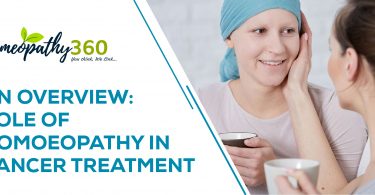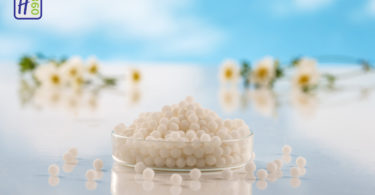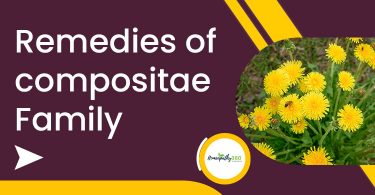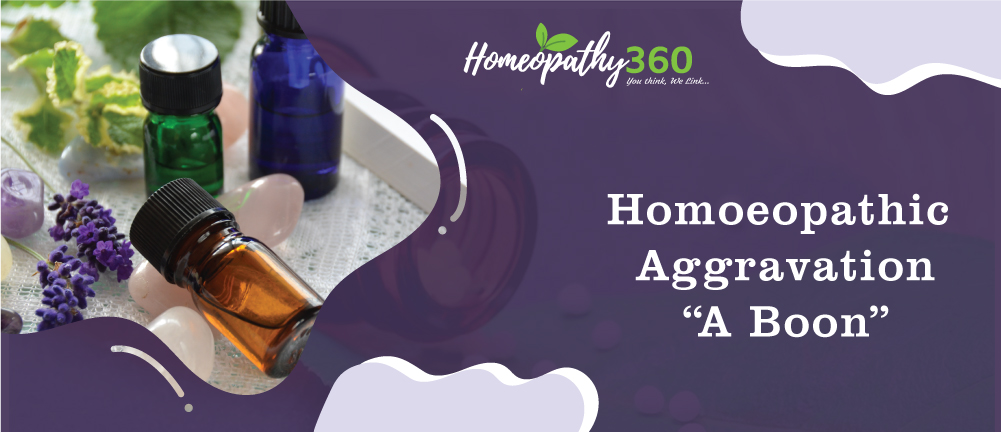
Abstract: Homoeopathic aggravation is temporarily increasing of existing symptoms, following the administration of a correct homoeopathic medicine. According to Organon of Medicine, two points are necessary for cure. Medicine should be similar and stronger than disease force. As medicinal force is slight stronger than disease force, it produce an aggravation, which is quick, short and strong followed by improvement. Once the homoeopathic aggravation has started, it is recommended not to disturbed the course of medicine and repetition of dose.
Key words: Homoeopathy, aggravation, Stuart close, Robert, Kent, M.L. Dhawale.
INTRODUCTION:
§ 157. But although it is certain that a homoeopathic remedy, administered in a small dose, quietly annihilates the acute disease which is analogous to it without producing its other non-homoeopathic symptoms—that is to say, without exciting new and grievous sufferings; it often happens, notwithstanding, that it produces, at the expiration of one or a few hours after ingestion (according to the dose), a state something less favorable, which resembles the primitive affection so closely that the patient supposes the original disease aggravated. But in reality it is nothing more than a medicinal disease, extremely similar to the primitive one, and rather more intense in its nature. [1]
Stalwarts views on homoeopathic aggravation
- Hahnemann’s view on homoeopathic aggravation
§ -155: the most similar remedy corresponding to the symptoms of the disease will have a gentle healing action on the diseased part of the body, without any considerable disturbance.
§ -156: remedies usually produce at least one trifling, unusual disturbance, slight new symptoms in irritable and sensitive patient.
§ -157: if the dose is too high, remedy will produce an aggravation similar to the original disease.
§ -158: if the homoeopathic aggravation appears during 1st hour, it shows that acute disease will be cured by 1st dose only.
§ -159: The smaller dose produces shorter aggravations.
§ -160: the remedy apparently cannot be too much subdivided to be inefficient, aggravation is the process of cure not the increase of disease of patient.
§ -161: Aggravation in acute sickness, if any will be noted in 1st few hours. In chronic cases, in course of six, eight, and ten day, after which improvement and it will follow.[1]
- Kent’s view on homoeopathic aggravation
A disease ought always to be well considered as to whether it is acute or chronic. Where there are no tissue changes, where no ultimates are present, then you may expect the remedy to cure the patient without any serious aggravation, or without any sharp suffering, for there is no necessity of reacting from a serious structural change.
When the chronic disease has not ultimated itself in tissue changes, you may get no aggravation at all, unless, perhaps, it be a very light exacerbation of the symptoms, and that slight exacerbation of the symptoms is of a different character. It is the establishment of the remedy as a new disease upon the economy instead of the reaction which corresponds to a process of house cleaning. Elimination must take place, as we know, probably from the bowels, or stomach, by vomiting, by expectoration, or by the kidneys, in those cases where everything has been suppressed.
We must discriminate between that which is reaction and that which calls for a remedy. Reaction means, after administered similar medicine body shows signs of healing, in this case no change of medicine is require. We have reaction, which is but the result of that turning into order.
There is a difference between the ultimate of disease and absolute weakness of the vital force. There is such a state as weakness of the economy, and there is such a state as activity of the economy, with much tissue change. In feeble patients you may expect feeble reactions, or none at all after your remedy, but in the feeble cases they are of such character that you have few symptoms, and you can very seldom find a remedy truly specific.
Oversensitive people are such as are capable of proving everything that comes along. One must know whether the patient is oversensitive and proving the drug, or whether he has a vigorous constitution and is getting an aggravation. The remedy will be exaggerated in oversensitive and sometimes in those of weakly constitution.
One can find as a general thing in acute diseases, that if a slight aggravation of the symptoms comes in a few minutes, you will hardly ever think of giving another dose.
This trifling homoeopathic aggravation of the malady during the first few hours, the happy omen which announces that the acute disease will soon be cured, and that it will, for the most part, yields to a first dose.”
When this aggravation does not come, when there is not the slightest aggravation of the symptoms, and the patient appears to be gradually better after the remedy, then it is that the remedy shows that is has not acted upon the same depth; and that relief may cease in the case of an acute disease, and when that relief ceases the reaction has ceased and then another dose of medicine is correct practice.
Relief that begins without any aggravation of the symptoms, does not last so long in an acute disease as when an aggravation has taken place. A slight action of the remedy over and above the disease is a good sign.
Again, one can find if the remedy was not perfectly similar, he will not get an aggravation except in oversensitive patients, and then it is a medicinal aggravation.
When you find that you get no aggravation of the symptoms in a good vigorous constitution, none at all, very often your remedy has been only partially similar and it may require two or three of such partially similar remedies to finish the case.
The smaller the dose is of the homoeopathic medicine, the less and the shorter is the aggravation in the first hours.” It might be considered to mean an apparent aggravation, or an apparent aggravation of the disease.
This action (higher and higher potency) differs from the aggravation of a centesimal potency, during the latter the patient feels decidedly better. It is short, it is decisive, and only the characteristic symptoms of the disease are aggravated.
The disease itself is not aggravated; the disease itself is not added to, and is not intensified, but the symptoms of the disease stand out sharply and the patient says, “I am getting better.”
Paragraph 279:
“It has been fully proved by pure experiments that when a disease does not evidently depend upon the impaired state of an important organ the dose of the homoeopathic remedy can never be sufficiently small so as to be inferior to the power of the natural disease which it can, at least, partially extinguish and cure, provided it be capable of producing only a small increase of symptom immediately after it is administered.”
It is a fatal error to increase of the dose cannot make it more homoeopathic. The similarity of the remedy is first, and the dose is second.[2]
- Stuart Close view on homoeopathic aggravation
The “homoeopathic aggravation,” or slight intensification of the symptoms which sometimes follows the administration of the curative remedy, is merely the reaction of the organism, previously perhaps inactive or acting improperly because of decreased susceptibility, as it responds to the gently stimulating action of the medicine.
By “aggravation” is meant an increase or intensification of already existing symptoms by some appreciable circumstance or condition.
“Aggravation” is also used in homoeopathic parlance to describe those conditions in which, under the action of a deeply acting homoeopathic medicine (or from other causes), latent disease becomes active and express itself in the return of the old symptoms or the appearance of new symptoms. In such cases it represents the reaction of the organism to the stimulus of a well selected medicine, and is generally curative in its nature. [3]
- H.A. Robert’s view on homoeopathic aggravation
After the administration of the simillimum some action should result. According to Hahnemann, the nearer similar the remedy the more reaction we may expect (Organon, 154, 155). If the exact simillimum is found we are apt to get a slight aggravation before relief comes.
An aggravation that is quick, short, and strong is to be desired, because we know that improvement will be rapid.
Among the most common reactions after the remedy has been administered is aggravation or amelioration. Now there are two types of aggravations, either of which may be manifest.
There may be a very different type of aggravation,
1. The symptoms are worse, but the patient is growing better. On the other hand, the aggravation of the symptoms while the patient reports himself as feeling better is an indication that his vital force is being set in order, but individual symptoms may show aggravation.
2. There is the aggravation which is an aggravation of the disease condition, in which the patient grows worse. The aggravation when the patient is growing actually weaker is a sure indication that the symptoms are taking on a more internal phase and the vital organs are more affected. In other words, it is an illustration of the reversal of the order of cure.
The aggravation of the diseased state may come from an incurable state. The potentized remedy will never produce a fatal aggravation, or a destructive aggravation. In other words, a single dose of the high potency will not produce disease conditions; it has the power to develop conditions that are already present if it is used carelessly or ignorantly. [4]
- In Hahnemann’s Chronic Diseases, he was equally emphatic when he says:
But when these aggravated original symptoms appear later on in the same strength as at the beginning, or even more strongly later on, this is a sign that the dose of this antipsoric remedy, although it was correctly selected, was too great, and caused the fear that no cure could be effected through it, since medicines given in so large a dose are able to establish a disease which in some respects is similar, but even greater and more troublesome, without extinguishing the old disease. This is caused by the fact that the medicine used in so large a dose unfolds also its other symptoms which nullify its similarity and thus establishes another dissimilar disease, also chronic, in place of the former.[5]
- Dr M.L. Dhawale’s view on homoeopathic aggravation
Simple homoeopathic aggravation: This consists of a sharp initial aggravation of the symptoms in a patient but with the patient feeling better in general. This brief phase is followed by a general amelioration which lasts for quite some time if not hampered. These types of reaction occur when an organic change are not yet far advanced and indicates a good prescription. This phase of aggravation should not be interfered with but should be allowed to run its course unimpeded.
Prolonged homoeopathic aggravation: This consists of a severe type of reaction in which all symptoms in the patient are profoundly aggravated and the patient appears to be going through a sort of rehearsal of the things to be expected in the future. This storm lasts for quite some time once it is unleashed and the patient is just tossed around helplessly, after the storm patient slowly finds himself on his feet, as it were. He is making a slow but definite progress. Any interference during this time spoil the case, so use of placebo will help the patient through this stormy period. The constitutional remedy in gross structural cases which was administered straight off was essentially a bad prescription; a related superficial medicine should be administered.
Killer homoeopathic aggravation: This form of aggravation occurs when physician who aims at curing an incurable case or whose knowledge of disease is inadequate to diagnose correctly the pathological changes that have taken place in vital organ. This time the storm that has been unleashed proves too much for the depleted vital force which is now unable to meet the fury of the reaction, precipitate by the tremendous energy of the constitutional remedy. In this type of cases palliation is the best treatment.[6]
Conclusion:
Significance of homoeopathic aggravation in practice
In reality, homoeopathic aggravation is nothing more than a medicinal disease, extremely similar to the primitive one rather more intense in its nature. To cure the acute disease, to select the remedy according to depth of pathology, to wait and give placebo in chronic cases, do not interfere course of medicine during the homoeopathic aggravation. It is a boon in acute cases and cases which have functional changes, while cases which have gross pathological changes in advance stage, in incurable cases, the physician needs to be palliate.
REFERENCES:
[1] Hahnemann S, ORGANON OF MEDICINE, 5TH edition, Indian books and periodicals publishers. [2] Kent JT, A.M., M.D, LECTURE ON HOMEOPATHIC PHILOSOPHY, Reprint edition: 2002, Indian books and periodicals publishers [3] Close S, M.D., THE GENIUS OF HOMOEOPATHY, Reprint edition: 2001, Indian books and periodicals publishers. [4] Roberts H.A., M.D. THE PRINCIPLE AND ART OF CURE BY HOMOEOPATHY, Reprint edition: 1994, B.Jain publisher PVT, Ltd, New Delhi. [5] Hahnemann S, Chronic Disease, Their peculiar nature & their homeopathic cure, Reprint edition-1994, B.Jain publisher PVT, Ltd, New Delhi. [6] Dhawale ML, M.D, Principles And Practice Of Homoeopathy (Part-1), 3rd edition, Institute of clinical research.About Author:

Dr Srabani Pal M.D. (Hom)- Associate Professor,H.O.D Department Of Anatomy J. N. Homoeopathic Medical College Parul University Vadodara
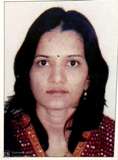
Dr Falguni. Patel M.D. (Hom) – Professor,H.O.D Department Of Forensic Medicine & Toxicology, Jawaharlal Nehru Homoeopathic Medical College, Parul University Vadodara


